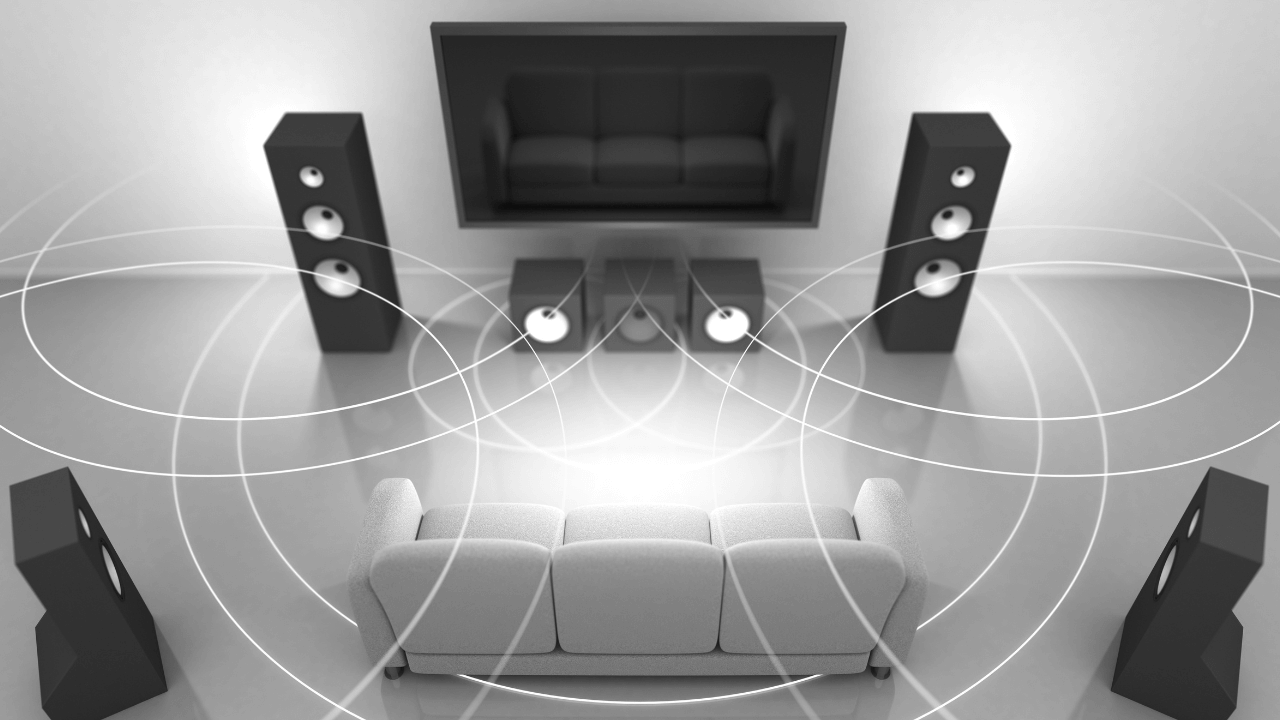Ever look at that fancy TV of yours and wonder what the small little logos in the corner are? Chances are you’re seeing a logo like DTS:X or Dolby Atmos which is intended to inform you that your TV includes immersive audio capabilities. But the truth is, watching a movie or streaming music on these TV doesn’t automatically transport you into a world of incredible sound. Sure, the badge means your TV makes noise, but achieving a “real” immersive audio experience is a bit more intricate than that.
For those relying on their TV’s built-in speakers, the dream of a true immersive audio experience will be elusive. Immersive content is crafted to envelop listeners with sound from every direction—front, side, behind, and even above. However, the typical two speakers in TVs struggle to authentically reproduce the 8, 10, or 12 audio channels in immersive content. While some TVs employ “virtualization” to simulate the sound of extra speakers, such techniques change the tonal qualities of the audio and force a limited ‘sweet spot’ for optimal listening. Just like with a magic show, there are some seats where the illusion just doesn’t work. And when it does kind of work, your brain still thinks it’s a cheap parlor trick. Surely, there has to be a better way?
Enthusiasts have long known integrating real speakers into the system is key. Connecting an A/V receiver (AVR) to your TV enables the distribution of sound across multiple speakers, with placement of those speakers to the front, sides, behind, and above the listener as studio producers intended. Yet, the challenge lies in seamlessly integrating black boxes and speakers into modern living spaces, with wiring and potential wall repairs complicating matters, ultimately limiting adoption. AVR and smart TV sales data indicate that only about 1% of TVs are ever connected to an AVR.
To overcome the acceptance factor, manufacturers developed the soundbar—a sleek, elongated box designed to fit beneath your TV, housing multiple speakers strategically aimed to bounce sound around you. While an improvement over TV speakers, soundbars still rely on virtualization to mimic speakers behind you and on spatializers to make the bar sound bigger than it is, introducing unnatural audio artifacts and the need for a specific listening position for maximum effect. Still, the soundbar is a nice step up in sound quality from a TV. Just don’t expect a true immersive sound experience.
Getting “real” immersive sound to the masses involves strategically placing speakers around the room, minimizing audio processing, and preserving the aesthetics of the living space. Soundbar systems with wireless surround satellites and subwoofers have embraced this approach. Eliminating the need for speaker wires gives the freedom to place speakers almost anywhere, immersing listeners in sound while sidestepping audio artifacts from virtualization. However, a drawback lies in the use of proprietary radios that limit compatibility to the soundbar those speakers are bundled with, restricting options for expanding or upgrading the system. Yet more compromises.
But what if you could combine the flexibility of AVRs with the convenience of a wireless soundbar system, without the clutter of black boxes? Until now, technology has been the bottleneck. Enter DTS Play-Fi, a revolutionary technology addressing these limitations.
Play-Fi supports up to 12 channels of wireless streaming over Wi-Fi, aligning with the standards of the best movie content. Operating over standard Wi-Fi, Play-Fi seamlessly integrates with existing wireless infrastructure, eliminating additional hardware costs or special hubs. And it works with the Wi-Fi radio built into all modern TVs and smart speakers. No more dongles, hubs, black boxes, or HDMI cables. Play-Fi also supports interoperability between brands and products, allowing users to choose the performance, aesthetics, and cost for each component of their speaker and audio system.
“Do I really need twelve channels?” one might ask. The answer is elegantly simple: users can add speakers as their budget and space permit, up to twelve channels. Play-Fi allows users to configure their audio setup according to their needs, from a basic two-channel stereo system to a fully immersive 7.1.4 layout. Play-Fi also enables users to tailor their system gradually over time without being tied to a specific brand, unlike proprietary systems, or starting with an expensive AVR. The combination of inexpensive Wi-Fi radios with Play-Fi’s innovative streaming technology makes true immersive sound attainable for everyone.
For years, real 12-channel immersive audio setups have been the dream for home theater enthusiasts. However, over time, mass market products have settled on mimicking immersive sound with less-than-immersive sounding systems, all in the interests of getting more logos into homes. The advent of wireless technologies like DTS Play-Fi will end that era. It’s about to get “real” everybody.
Stay up to date on the latest technology and insights from DTS here.



